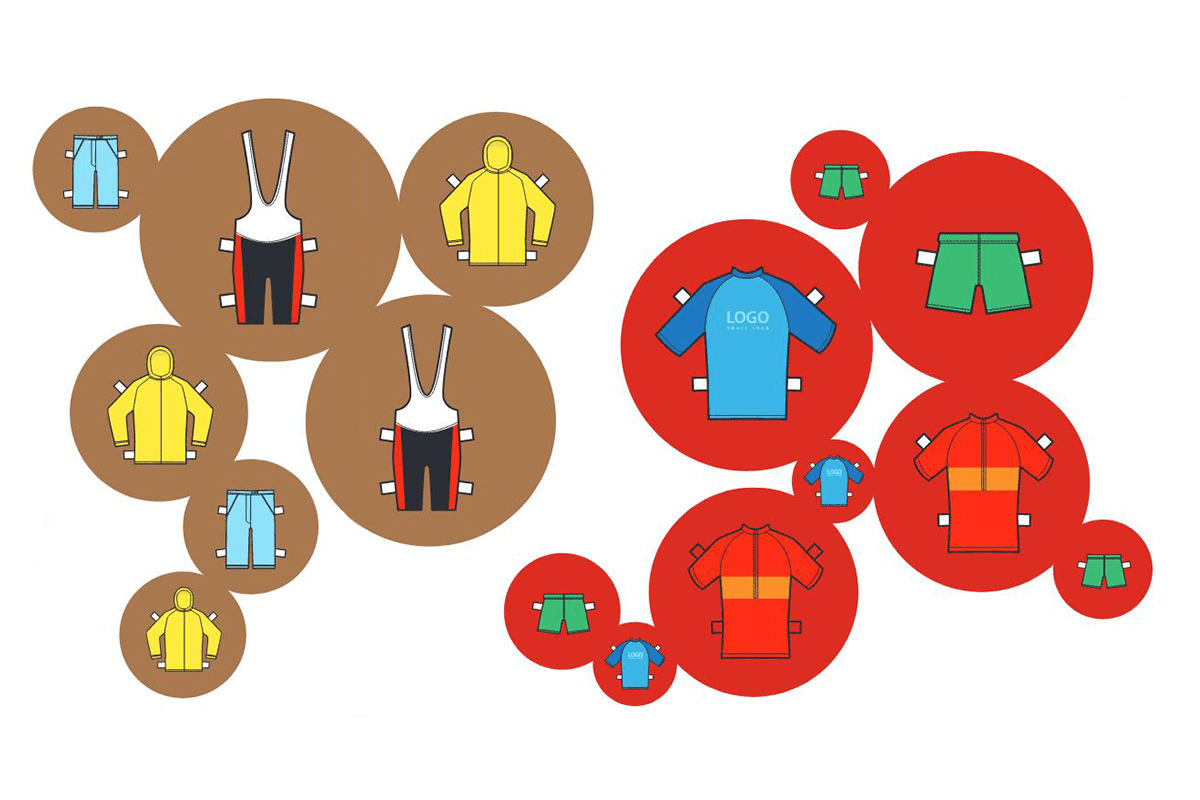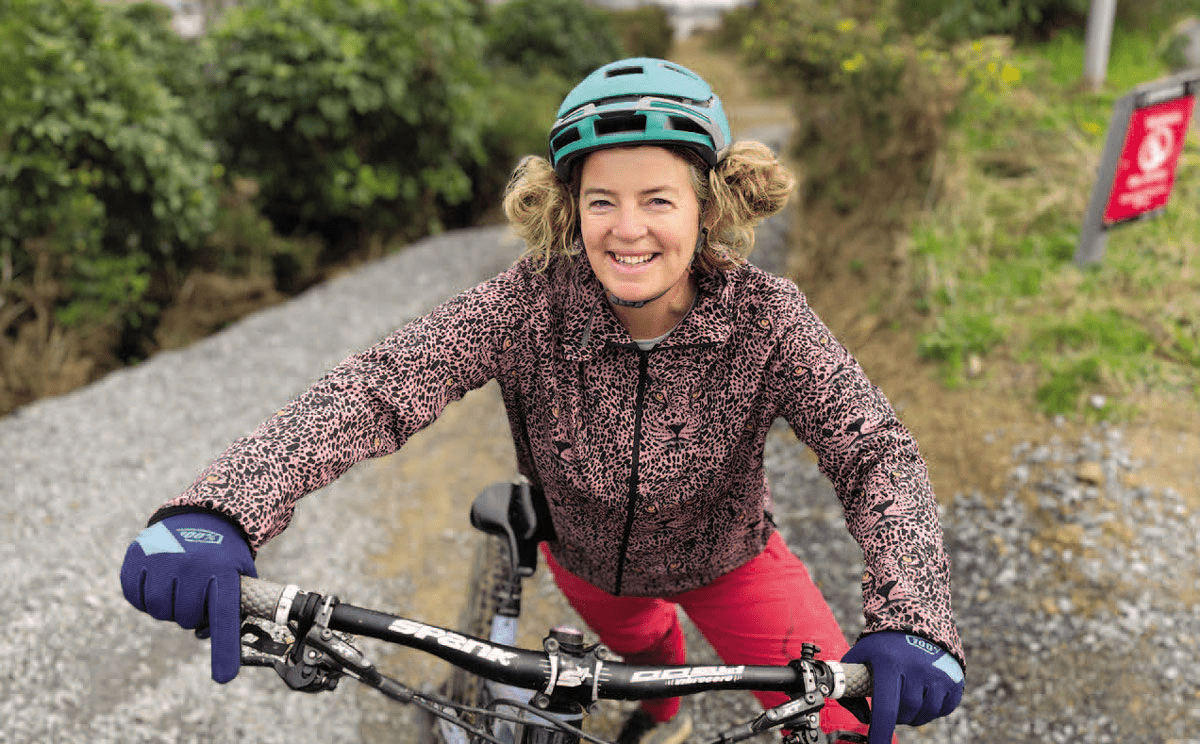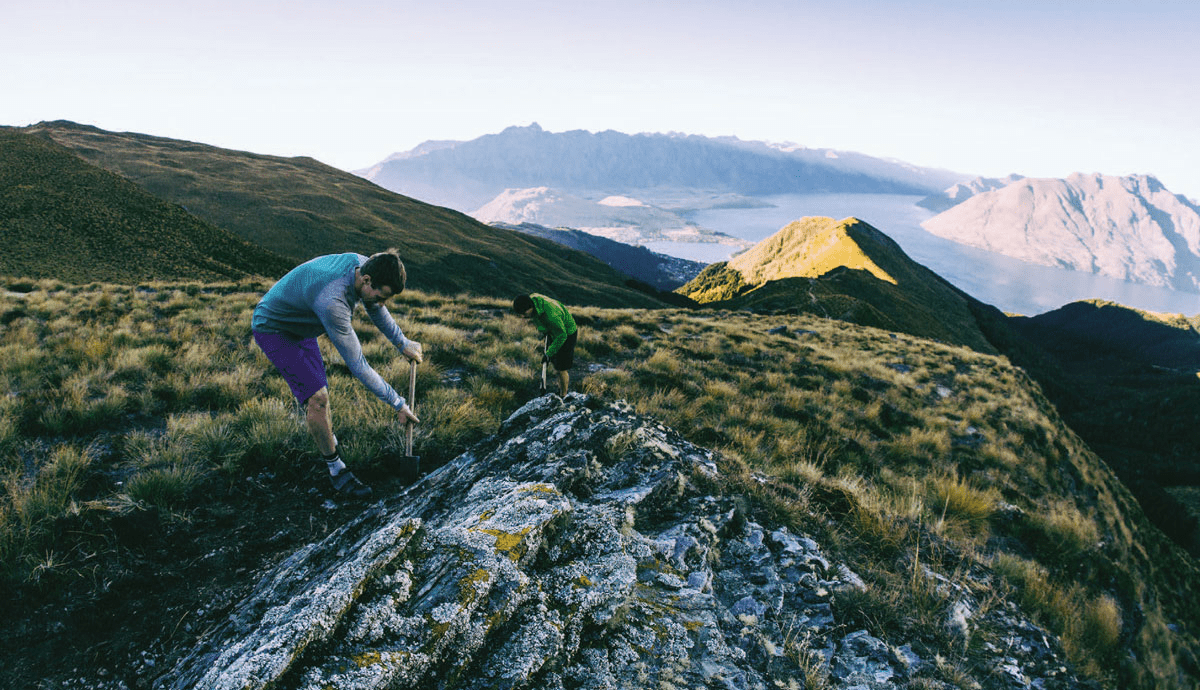The Kitchen: Tortillas
If you’re thinking about escaping into the backcountry on a riding or multiday bikepacking trip, you’ll need to think about grub. As they say, food is fuel. When you finally reach camp, nothing beats fresh food. There’s a tonne of freeze dried meals out there and they work well, but sometimes it’s good to mix it up. Over the past few years, I’ve found tortillas a staple for riding and bikepacking missions.
Tortillas are so good, readily available and offer minimal bulk. You can pack them just about anywhere on your rig: simply fold ‘em down and stash them for later. I’ve used these, and peanut butter slugs from Pic’s Peanut Butter, for a light lunch on the road. If you want to add a little something extra, sprinkle some wholegrain crackers through the middle.

For the evening, campside burritos are easy to prepare. For the filling, throw in some cheese or avocado to add some extra jazz. My favorite tortillas by the fire are slaw, sausage and a light drizzle of mayo or something similar over the top. You can pack most of these ingredients down quite well, and they taste bloody good!
Remember to save small sachets of mayo/ketchup when eating out in your normal life, as they come in super handy when pushing the pedals.
No-cook options for riding and bikepacking trips are great and that’s where tortillas shine. Fill ‘em with fresh vegetables, dried meats or anything you like really. Heck, if you want to make your night away from the bustle boujee, rip them into smaller bits and dunk into hummus. •
Words: Liam Friary
Photography: Marcus Enno
Columns: Musings
“The posse of e-bikers... had their own culture, which they had created themselves.”
The other day we went for a ride that gave us plenty of time to yak about mountain biking. Usually, we get into a long and complicated discussion about trails. That subject provides plenty of material for hours of slow climbing, which is when most of the talking gets done.
This time though, we gave the trails a rest and got into a session about the culture of the sport, and what is happening to it.
First of all, what were we talking about? Is there a mountain biking culture?
There are possibly dozens. It certainly isn’t one thing. Under the general umbrella of ‘mountain biking’ there are trail riders, downhillers, cross country racers, and adventure-style expedition riders. We could tack on some types of bike packing. Dirt jumping. Single speeding. Klunking.
Pondering things further, within ‘trail riding’ there are people who shuttle, people who don’t, people who stick to the beaten track, and people who like to roll their own lines.
Downhilling includes some of the shuttlers, and the full-on racers. Cross country has casual types, training for an event, and people aiming at the Olympics.
Single speeding can be a low-budget way of protecting the flash bike from the worst of winter wear, or a semi-religion.
And, a further complication is that many people will be in more than one camp. Most people I know are, and many of them do other bike stuff besides ‘mountain biking’: gravel; road; BMX; track; cross.
But, let’s say there is a mountain biking culture. Let’s, for argument’s sake, bung everybody we have listed above into a broad category and call them ‘mountain bikers’. Are they homogenous enough to call a culture?
What got us started on this topic, was turning up at an area where people sometimes congregate, to stop and fill up our water bottles. While we were there, a posse of e-bikers arrived. They were all on eMTBs, pretty slick ones at that. They had the basic gear required: fit-for-purpose shoes, shorts, backpacks, gloves, etc. So far, so good.
They also had hi-vis raincoats. All five of them. In the forest.... where they don’t need to be seen and it wasn’t raining. All their seats were too low, and all their gears were too high. Well, too low and too high for anybody who knows what they are doing. Saddle height and correct gear selection don’t matter much if you have an extra couple of hundred watts on tap, so they weren’t doing anything ‘wrong’.

It just didn’t look ‘right’.
The sight of this gang made both of us happy – they were out in the woods, on bikes, having fun.
It also made us raise our eyebrows and wonder what it meant for the ‘culture’.
The reality is, probably nothing.
In past years, people got into the sport as individuals, and identified with one or other of the subcultures. They learned the unwritten rules and adopted the appropriate gear. By the time they had developed enough to find their niche, they really fit their niche.
Over the past few years, people have been getting into it in droves – little gangs of people appear to have taken up bike riding en masse. The posse of e-bikers that sparked up our discussion were all on the same brand of bike, all on the same model year. They had their own culture, which they had created themselves. They didn’t pay any attention to us, or even say hello. They were doing their own thing, in their own funny-looking way.
A couple of days later, I was sitting in the doorway of my van and a woman nearby was racking her bike for her trip home. She had a big e-bike, and she was a tiny woman. I offered to help, but she reckoned she had racked her bike many times and proceeded to do it quickly and efficiently.
We got chatting. This woman was the leader of three bike groups from over at the coast. One of them comes ‘mountain biking’ on a weekly basis. There are enough in that group that they split into smaller pods for their lap of the woods. I got to see a few more members of her crew, the fast bunch who go further than the beginners – or what she called, ‘the pedal bike group’.
They were all very similar: late-model high-end e-bikes, all looking slightly odd to my eye. Even the ones that had the basic layout looking the business had been accessorised with things no ‘mountain biker’ would add to a trail bike, e or otherwise. Carriers. Phone holders. Odd mudguards. They wore odd riding outfits, too – but oddly consistent.
Much as downhillers look different to XC riders, this new mob look different again. But among their own, they fit.
They are yet another mountain biking faction. I’m just not sure what to call them yet. •
Words and illustration by Gaz Sullivan
Trail Builder: Lasting Legacy
When avid mountain biker, Lou Hunt became a Trail Fund NZ trustee on the Backcountry Trust six months ago, she didn’t plan on becoming a legacy-leaving advocate. But, the impact it can have has got her thinking. To gain a better understanding of this insight, Trail Fund sat down with Lou to discuss leaving a legacy for what you love.
According to most, there are many ways to leave a legacy; be it money, time or influence. Lou agrees, but she says that when it comes to the Backcountry Trust, it’s become clear that money in particular can help achieve some big milestones.
“One thing I’ve noticed, since being in the role, is the number of bequests left to the Backcountry Trust (BCT) for the other two organisations involved,” says Lou. “Both Federated Mountain Clubs (FMC) and the New Zealand Deerstalkers Association (NZDA) are organisations that have had at least a generation of bequests coming their way.
“And these aren’t only small bequests – they can be property or a decent sum – which, when invested properly, can take an organisation from volunteer-run to professional.”

For those who don’t know, the BCT funds and supports volunteers to maintain huts and tracks on public conservation land for outdoor enthusiasts including trampers, deerstalkers and mountain bikers. Established in 2017, it is the successor to the Outdoor Recreation Consortium, which saw the three key organisations – FMC, NZDA and Trail Fund NZ – working together for the first time from 2014 to 2017. Each has two trustees on the Board, ensuring equal representation.
“The bequests mean both FMC and NZDA have people in funded roles, while Trail Fund remains completely volunteer-run,” explains Lou. “It’s not really surprising, given that trail building in its current capacity is a relatively new industry, but it’s never too early to plant the seed for the multitude of mountain bikers who may want part of their legacy to be leaving something to the recreation they love.
“As a passionate advocate for getting more women and girls into the sport, and as someone with no children, I am definitely keen for my legacy to go to trails on all three levels – money, time and influence. I’m currently working on the last two through my role with BCT and Wellington Off-Road Department (WORD) instruction but hoping the former will be a good 50 years away!”
Spreading the love
While we’re on the topic, Lou says that if you are going to write Trail Fund or the Backcountry Trust into your legacy, try to trust the system.
“What I’m currently keen to help shape, is the criteria around what a good BCT investment is, to ensure it’s broader than shrines of boyhood antiques.”
All jokes aside, Lou believes mountain bikers will want to leave a legacy to the sport that has offered them so much, it will just take time.
“The thing is, mountain biking may have been around in the 80s, but that’s not that long ago and, until now, it wouldn’t be clear who to leave a bequest to. Now that there’s such a great framework in place for outdoor recreation, would-be legacy leavers would know their bequests were in good hands.”

Final piece falling into place
Lou admits that another possible cause for pause may previously have been a lack of advocacy for mountain biking on Department of Conservation managed Crown land. However, that’s been steadily shifting over the past few years, and an announcement from Conservation Minister Kiri Allan in mid-December hopefully means any bequests coming BCT’s way will have plenty of Crown land to impact in the future.
The announcement, which highlighted an intention to modernise New Zealand’s conservation law, highlights the importance of reflecting what local communities want – including mountain biking!
Minister Allan noted, “Conservation planning and permitting decisions often don’t – or can’t – reflect what local communities want, or the latest environmental science. The current system isn’t fully facilitating the activities we want to enjoy, like mountain biking, or the scientific research we need to address the biodiversity crisis.”
But while Lou says she’s seen firsthand the difference bequests can make, it is by no means the only avenue.
“It’s really about getting out and giving back to the community you care about. Help build a trail, buy some Trail Fund gear or volunteer for a hut rebuild. Everything you do will be part of the legacy you leave.” •
Words: Meagan Robertson

